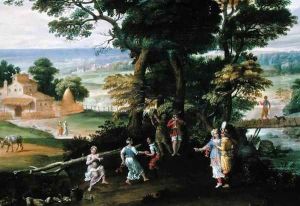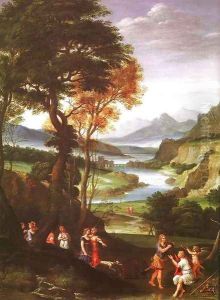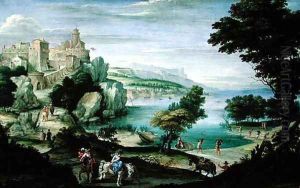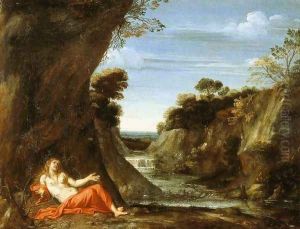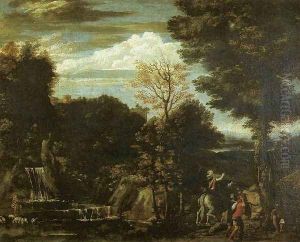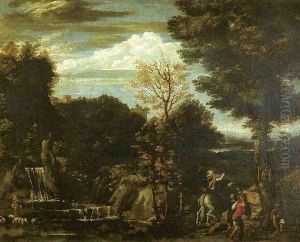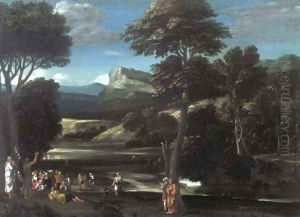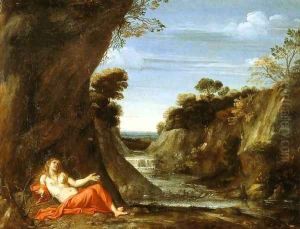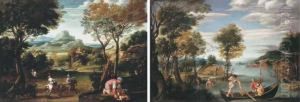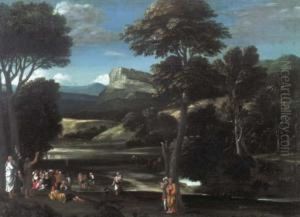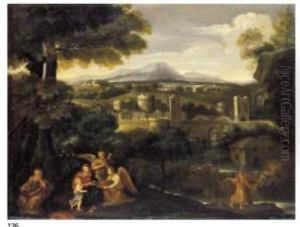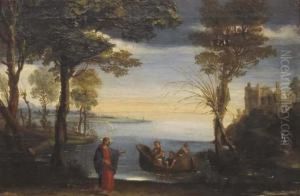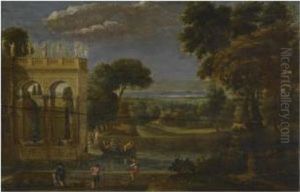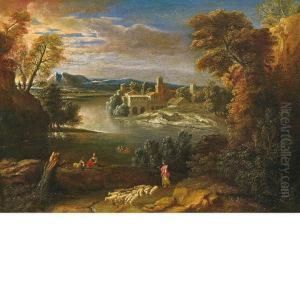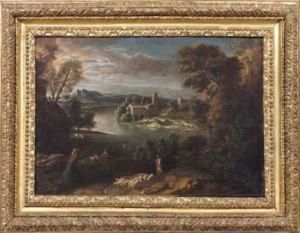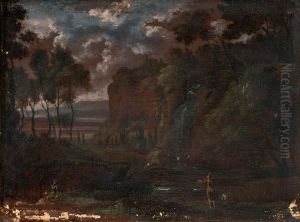Gian Battista Viola Paintings
Gian Battista Viola was an Italian painter of the late Renaissance period, born in 1576 in Bologna, Italy. Viola is chiefly remembered for his contribution to landscape painting, a genre that was gaining popularity during his lifetime. His works are characterized by their serene beauty, meticulous detail, and the harmonious interaction between light and nature. Viola trained under the guidance of the Carracci family, a notable dynasty of painters who played a significant role in the development of the Baroque style in Italian art. Despite the influence of the Carracci's more dynamic and emotive style, Viola developed his own distinctive approach to painting, focusing on the tranquil and idyllic aspects of nature.
Viola's career was largely based in Bologna, but his reputation as a landscape artist led to commissions from patrons in other parts of Italy. His landscapes often featured classical ruins or pastoral scenes, imbued with a sense of timeless peace and beauty. These works reflect the influence of earlier landscape painters while also anticipating the more naturalistic landscape paintings of the 17th century. Unfortunately, despite his talent and the quality of his work, Viola did not achieve the same level of fame as some of his contemporaries. His works were often overshadowed by those of more prominent artists of the time.
Throughout his life, Gian Battista Viola remained devoted to the study and representation of nature. His dedication to capturing the subtleties of light and atmosphere had a lasting influence on the development of landscape painting in Italy. Viola passed away in 1622, leaving behind a body of work that, though not widely known, is highly valued by art historians and collectors for its beauty and historical significance in the evolution of landscape art.
